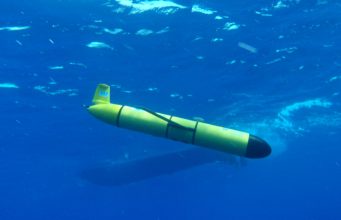Monitor - ISSN 1472-0221
The Newsletter for PC-Based Data Acquisition and Control
Issue 254, November 2019
Welcome to Monitor - thank you for subscribing. Any comments or questions email monitor@windmillsoft.com. For a full archive of back issues see windmill.co.uk/newsletter.html
You can download a pdf copy of this newsletter here.
Contents
* Measuring Torque
* Your DAQ Questions Answered: Comparator Communications
* Data Acquisition News Round-Up
Measuring Torque
Web link: https://www.windmill.co.uk/torquemeter.html
Torque is the tendancy of a force to cause rotation. It can be measured with a torque meter. If your torque meter has an RS232 option, you can use the free Windmill software to log the torque data. (You will also need an RS232 to USB adaptor.)
You can download Windmill ComDebug to collect torque data - go to https://www.windmill.co.uk/serial.html.How to log data from a Torque Meter
- Run the Windmill ComDebug program and enter your
meter's communication settings, eg:
- Baud: 4800
- Data Bits: 8
- Parity: None
- Flow control: None
Check your manual for your settings. - Click the Channels button and tell Windmill how to
find and extract the data needed
- Make sure that Read channel is checked
- Enter the engineering units in which your meter will send the data, eg Nm
- You can ignore the maximum and minimum settings: these are just a guide for chart scaling etc. - Choose Edit Message_1 from the Main Menu and press the send button. You should see data from your torque meter.
- Press the Parse button.
Check your manual to find the format of your torque meter's data stream. Some, for example, send a 16 character data stream. The 7th character gives the polarity (positive or negative) and the next 8 give the data values.
- Enter parsing instructions. - Enter your timing settings. These should work for most
torque meters
- Reading Protocol: Request/Response Background
- Timeout: 1000 mS
- Data Persistance: 5000 mS
- Returned Message Length: 16
- Instrument Initialisation String: Leave blank - Check everything is working. In the Message Screen click Run. Select the File menu to save readings in a text file.
Your Data Acquisition Questions Answered: Modbus Software
Question
I am currently looking for modbus TCP trending software/hardware that we can use as a stand-alone system onboard ships. I was wondering if your "windmill 7" software is still available and if it might be possible for me to receive a demo copy of it. Looking forward to your reply.
Answer
Yes, newsletter subscribers can receive a free copy of the Windmill software which handles modbus devices. To get your copy email us. For help using it see https://www.windmill.co.uk/modbussettings.html
DAQ News Round-up
Welcome to our round-up of the data acquisition and control news. If you would like to receive more timely DAQ news updates then follow us on Twitter - @DataAcquisition - or grab our rss feed.
Better Soil Moisture Sensors using Graphene Oxide
Agriculture uses 80% of the usable water in India. However, almost half of it is wasted due to inefficient irrigation systems. Researchers have designed an affordable soil moisture sensor using graphene oxide. The sensor detects small changes in soil moisture and is not affected by changes in the temperature and salt content of the soil.
Source: Research Matters
https://researchmatters.in/
Compact depth sensor inspired by jumping spiders
Jumping spiders have impressive depth perception despite their tiny brains, allowing them to accurately pounce on unsuspecting targets from several body lengths away. Inspired by these spiders, Harvard scientists have developed a compact and efficient depth sensor.
Source: Harvard School of Engineering
https://www.seas.harvard.edu/
Swarms of golf ball-sized robots could detect leaks in the sewers
Floating robots could help map underground pipe networks and detect leaks and blockages in plumbing.
Source: New Scientist
https://www.newscientist.com/
Underwater robotic gliders measure ocean sound levels
Equipped with hydrophones and sensors, underwater glider sends real-time measurements of changing noise levels plus temperature, salinity and depth.
Source: SCUBA News
https://news.scubatravel.co.uk/

Photo credit: Oregon State University
* Copyright Windmill Software Ltd
* Reprinting permitted with this notice included
* For more articles see https://www.windmill.co.uk/
We are happy for you to copy and distribute this
newsletter, and use extracts from it on your own web
site or other publication, providing the above notice
is included and a link back to our website is in place.
For previous issues by subject see https://www.windmill.co.uk/monitorindex.html
SUBSCRIBING OR CANCELLING SUBSCRIPTION Visit https://www.windmill.co.uk/newsletter.html and add or remove your e-mail address.
Windmill Software Ltd, PO Box 58, North District Office,
Manchester, M8 8QR, UK
Telephone: +44 (0)161 834 6688
Facsimile: +44 (0)161 833 2190
E-mail: monitor@windmillsoft.com
https://www.windmill.co.uk/
https://www.windmillsoft.com/
